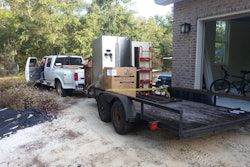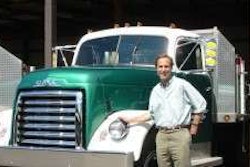Santa has an army of elves to build toys for kids.
Ford has an army of its own when it comes to building its flagship F-150s.
These wonders of contruction engineering don’t have names like “Sprinkles” or “Mister Jingles.” They are led by a behemoth named “Godzilla.”
For Christmas this year, Ford hosted me on a tour of its Kansas City Assembly Plant (KCAP), where I was able to see the 320 robots responsible for joining F-150’s aluminum body panels. At more than 4.7 million-square-feet, the facility sits on more than 1,200 acres in Claycomo, Mo. and employs more than 7,000 people, who work along side the robots that produce F-150 and Transit commercial vans.
In the videos above and below, the robots rivet on the pickup’s side panels. According to Ford, the rivets are up to five times stronger than welds. The new F-150 has more than 2,400 rivets in it, and those replace the more than 5,000 spot welds that put together previous generations of F-150.
When assembly is complete at any given station, robots pick the pieces up or roll them along to the next station. The choreography in this process is impressive.
In the video below, the floor-pan is riveted and prepped to go futher down the assembly line.
In the video below, the robots scan the opening for the roof for an exact fit. The robots can move the roof piece fractions of millimeters to ensure it is placed perfectly into place.
KCAP uses three times as much adhesive in the new aluminum F-150 than was applied to previous models. More than 350 feet of epoxy is applied throughout the body to supplement the rivets and flow-drill screws, which also dampens noise and blocks out moisture.
Ford’s robot elves are a lot bussier than Santa’s. They crank out upwards of 1,100 F-150s a day. The assembly process is like a ballet of adhesive application, self-piercing rivets and flow-drill screws. Overall, you have to believe Henry Ford would stand in awe of what his assembly line concept has turned into.



![[ click to enlarge + ]](https://img.hardworkingtrucks.com/files/base/randallreilly/all/image/2015/11/hwt.drive-by-etiquette.png?auto=format%2Ccompress&fit=crop&h=167&q=70&w=250)





